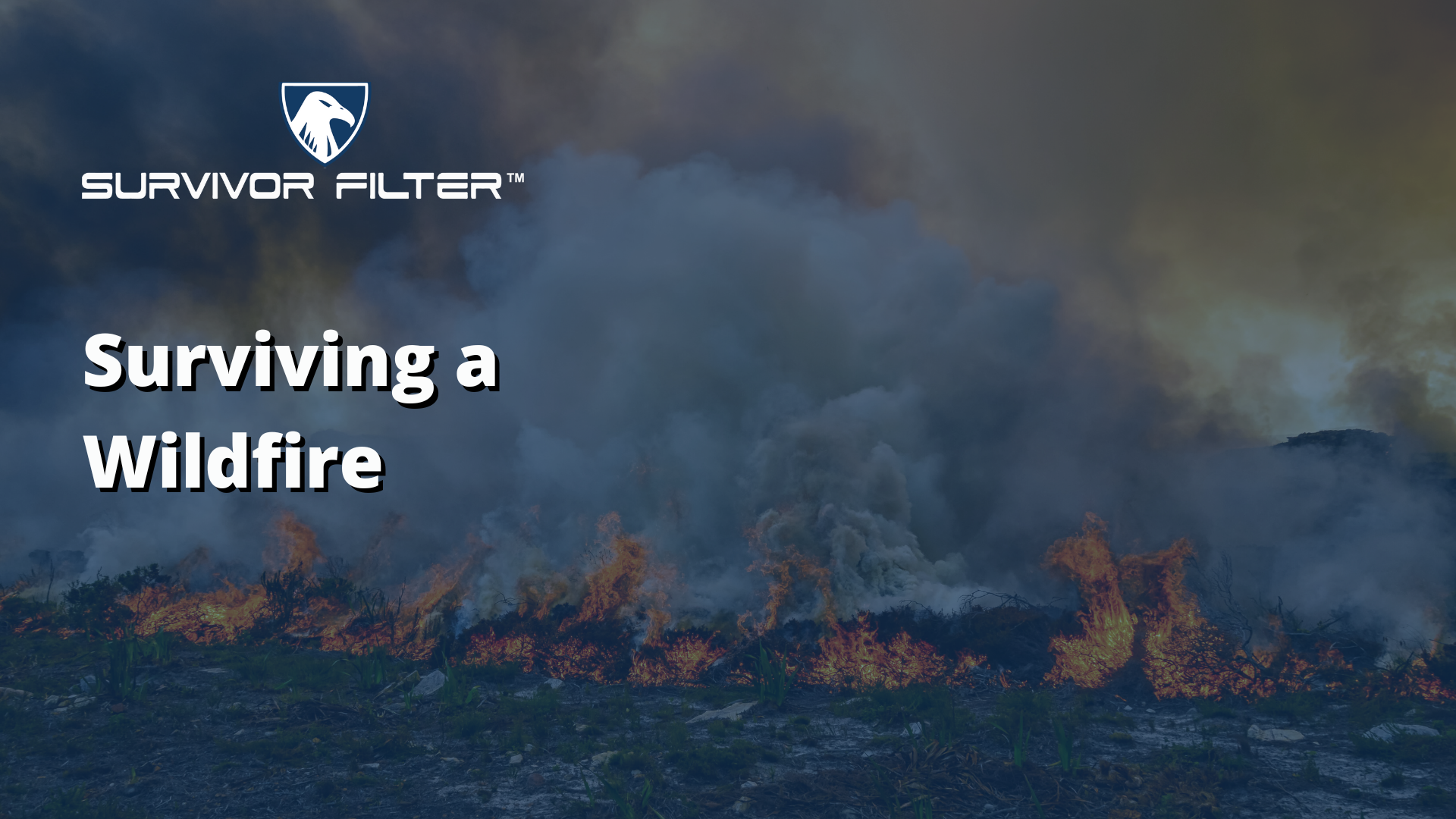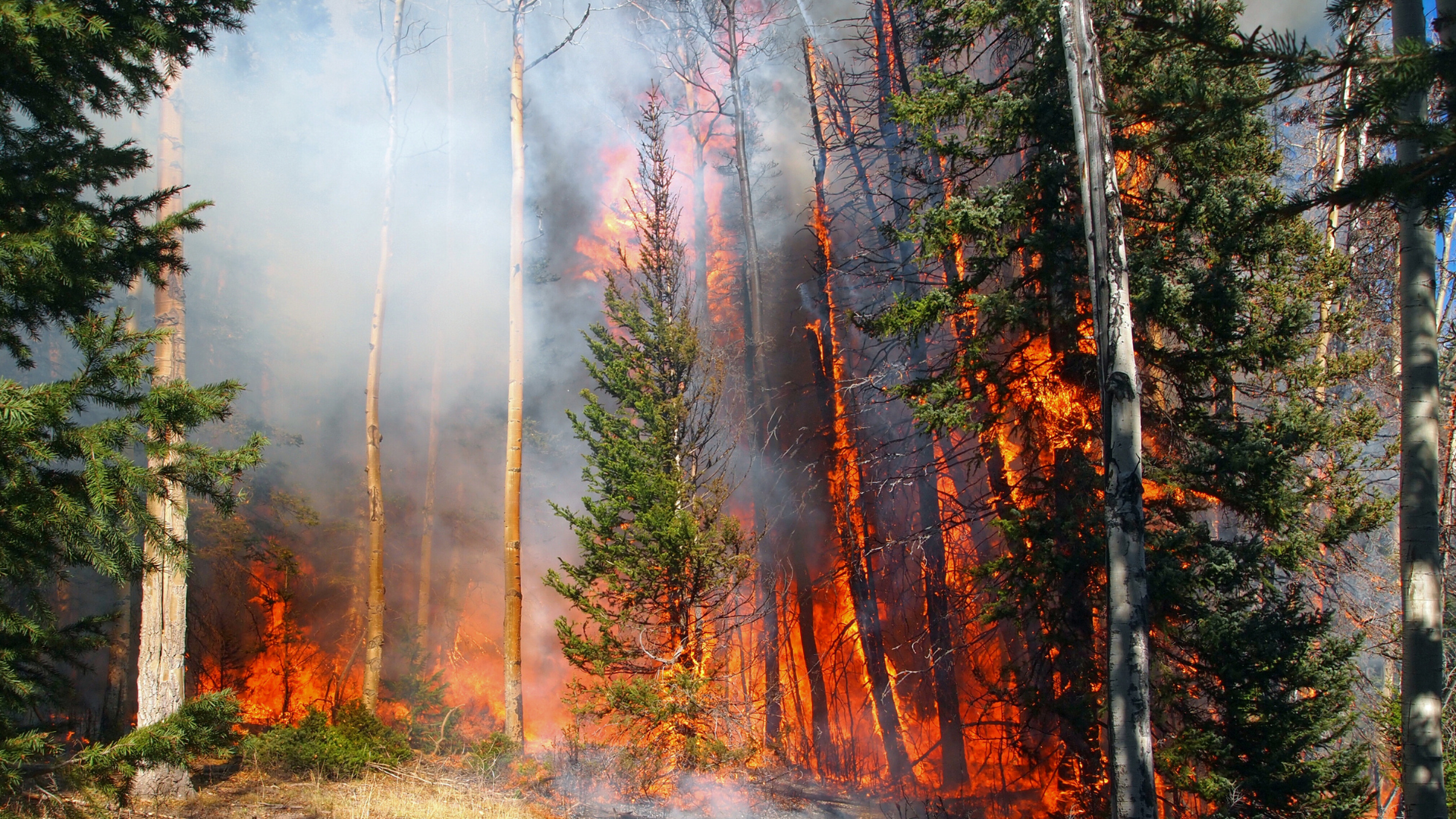Surviving a Wildfire

As the summer heat slowly gives way to the crispness of fall, the threat of wildfires remains ever-present, especially in drought-prone areas. For those who love the outdoors, as well as for the seasoned preppers and survivalists among us, wildfire preparedness is not just useful—it's essential. In this comprehensive guide, we'll walk you through the necessary steps to prepare, act, and recover from wildfires. With the right knowledge and tools, including some key solutions from Survivor Filter, you can enhance your resilience against this fiery foe.
Understanding How Wildfires Start
Wildfires can ignite from natural causes or human activities, and understanding these sources is crucial for prevention and readiness. Here are the primary ways wildfires begin:
Natural Causes:
-
Lightning: One of the most common natural causes of wildfires is lightning. These fires often occur when dry thunderstorms (storms that produce lightning but little rain) strike dry, combustible vegetation.
-
Volcanic Eruption: Hot lava or volcanic materials can easily ignite fires in surrounding forests and grasslands.
Human Causes:
-
Unattended Campfires: Campfires left unattended can easily flare up and spread, especially in windy conditions or when they’re not fully extinguished.
-
Discarded Cigarettes: Smoldering cigarettes tossed on the ground can ignite dry grasses and leaves, leading to large wildfires.
-
Burning Debris: Burning debris and yard waste in uncontrolled conditions can lead to embers being carried by the wind, igniting nearby areas.
-
Equipment Use and Malfunctions: Spark from chainsaws, power lines, or other equipment can ignite dry vegetation.
Environmental Conditions Contributing to Wildfires:
-
Drought: Prolonged dry conditions can make forests and grasslands like tinderboxes, ready to ignite with the smallest spark.
-
Wind: Strong winds can quickly spread wildfires, carrying embers over long distances and causing rapid expansion of the fire.
-
Heat Waves: High temperatures can increase the likelihood of wildfires by drying out vegetation, making it more flammable.
Understanding these triggers helps in developing effective strategies to prevent wildfires, such as maintaining equipment properly, ensuring campfires are completely extinguished, and observing fire bans during dry conditions.
Prepare: Before Wildfire Season
Preparation is your first line of defense against wildfires. This section offers detailed strategies to enhance your home's resilience, develop a robust evacuation plan, and ensure you and your loved ones stay informed about potential wildfire threats. By taking these proactive steps, you can significantly reduce the impact of wildfires on your life and property.
Awareness and Education
Begin by deepening your knowledge about wildfires. It’s essential to understand not only the common causes and typical behaviors of wildfires but also which areas are most susceptible. By recognizing natural conditions that favor wildfires—such as prolonged drought and high winds—and human factors like unattended campfires or discarded cigarettes, you can significantly enhance your preparedness. Keep yourself informed by regularly following local news and weather updates, which can provide crucial insights into wildfire risks in your vicinity.
Creating a Defensible Space
One of the most effective defenses against wildfires is creating a defensible space around your home. This proactive step involves:
-
Clearing away dead or dry vegetation that can fuel a fire.
-
Trimming overhanging tree branches.
-
Moving flammable materials, such as piles of leaves or firewood, away from your home’s exterior.
This buffer zone not only helps in reducing the chances of flames reaching your property but also provides a safer space for firefighters to operate if needed.
Emergency Kits and Plans
Prepare for an evacuation by assembling an emergency kit that contains:
-
Essential supplies like water, non-perishable food, and medications.
-
If you live in an area that is high risk, it can be to your benefit to have a wildfires evacuation map readily available in your emergency kit or bug-out bag.
-
Important documents, including insurance papers and personal identification.
-
Tools and supplies like flashlights, batteries, and a first aid kit.
-
Respiratory protection such as masks or respirators, crucial for filtering out harmful particles in smoky conditions.
Survivor Filter’s portable water filters are an indispensable addition to your kit, ensuring that you have access to clean, drinkable water in any situation.
Communication Plans
Effective communication can be lifesaving during a wildfire. Establish a solid family disaster plan with your family and community, that is easily accessible and possibly visible, detailing:
-
A predetermined meeting point outside your immediate neighborhood in case of separation.
-
Various evacuation routes and the importance of knowing them well.
-
Emergency contact information, accessible to all family members.
Home Hardening
Enhancing your home’s resistance to wildfires can be achieved through home hardening techniques, such as using fire-resistant materials for roofing and siding, and installing mesh screens over windows and vents to prevent embers from entering. Additionally, regular maintenance tasks like cleaning gutters, roofs, and outdoor areas of leaves, branches, and other debris are critical. These materials can catch fire from flying embers and pose a significant risk.

Act: What to Do During a Wildfire
In the heat of the moment, knowing how to act can save lives. This section covers the critical actions to take if you find yourself in the path of a wildfire. These tips will guide you through staying informed, evacuating safely, and protecting yourself if caught outdoors or indoors during a wildfire.
Stay Informed
Constant vigilance is key during a wildfire. Keep a battery-powered radio or a fully charged smartphone handy, ensuring you can receive real-time updates from local emergency channels. Knowing the fire's current status, direction, speed, and any evacuation orders is vital and can dictate your immediate actions.
Evacuate Early
Heed evacuation orders without delay. Waiting too long can trap you in a dangerous or even life-threatening situation. Have your emergency kit ready, ensure your vehicle's gas tank is full, and use pre-planned evacuation routes to avoid congested areas. Remember, your safety and that of your family comes first.
Protect Indoor Air Quality
If you find yourself needing to stay indoors:
-
Keep all windows and doors tightly shut to minimize smoke infiltration.
-
Use damp towels or foam to seal gaps under doors and windows.
-
Choose a room on the opposite side of the approaching fire to minimize smoke exposure.
Consider using air purifiers to help maintain breathable air quality inside your home.
Personal Safety
When exposure to outside conditions is unavoidable, protect yourself by wearing:
-
Long sleeves and pants made from natural fibers like cotton.
-
Heavy-duty boots and gloves.
-
A dry bandana over your nose and mouth, or better yet, a respirator designed to filter out fine particulate matter.
Recover: After the Wildfire
Recovery after a wildfire is both a personal and communal process. This section delves into the immediate steps to take once it’s safe to return home, assess the damage, and begin the cleanup. It also covers health precautions and community rebuilding efforts to help restore normalcy and improve resilience against future wildfires.
Returning Home
Only return to your home when it is declared safe by authorities. Be extremely cautious of:
-
Hot spots that can flare up without warning.
-
Ash pits that may not be visible but retain intense heat for days.
-
Structural damage that could make buildings or walls unstable.
Wear protective gear during your initial inspection to shield yourself from sharp objects, toxic ash, and other hazards.
Assessing Damage
Documenting the damage thoroughly is crucial for insurance claims and for planning repairs:
-
Take extensive photos and videos of all affected areas.
-
Note any structural damages and potential risks like weakened trees or compromised water lines. Wildfires can compromise local water sources, making the availability of safe drinking water a critical concern.
-
Keep a detailed inventory of damaged or lost property.
Health Precautions
Continued exposure to ash and damaged structures can pose serious health risks. Wear a mask and gloves during clean-up to avoid inhalation of toxic particles. Ensure your drinking water is safe or use a Survivor Filter product to filter out potential contaminants from damaged plumbing systems.
Community Recovery
Participate in community recovery efforts. Sharing resources, such as water purifiers, emergency kits, and tools can help rebuild and strengthen community ties after the disaster. Engaging with local recovery plans and prevention measures can also reduce the impact of future wildfires.
As we conclude this comprehensive guide on surviving wildfires, remember that preparation, timely action, and effective recovery are your best defenses against these devastating events. Equipping yourself with the right knowledge and tools, such as those offered by Survivor Filter, can make a substantial difference in your ability to face and recover from these natural disasters.
Stay vigilant, stay informed, and always be prepared to act. The steps you take today can significantly safeguard you and your loved ones tomorrow. Let's continue to build resilience and support each other in facing the challenges posed by wildfires.




